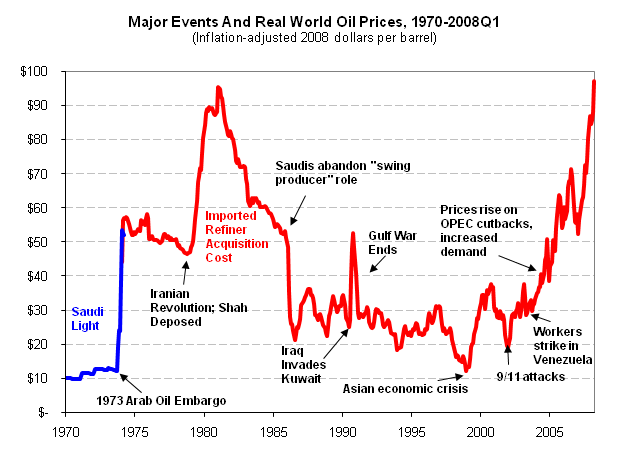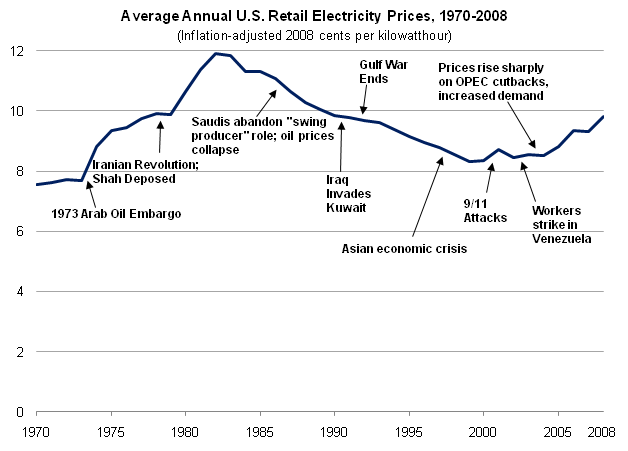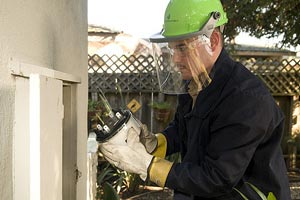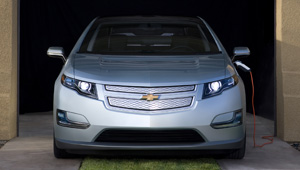Over at NRDC’s Switchboard blog, my friend Max Baumhefner has a pretty cool little electric-car-related post comparing oil prices to electricity prices over time. The whole thing is worth reading; there’s a lot of great detail and chart renderings to geek out on if that’s your thang. But the basic point is that while oil prices jump up and down in accordance with geopolitical events, electricity prices remain relatively stable.
Check out this chart by the Energy Information Administration (EIA):
 Now look at this chart about electricity prices over the same time period:
Now look at this chart about electricity prices over the same time period:
 You can see that electricity doesn’t correlate nearly as much with the news, but it’s a little hard to compare since the Y-axes are so different. Here’s how Max sums it up:
You can see that electricity doesn’t correlate nearly as much with the news, but it’s a little hard to compare since the Y-axes are so different. Here’s how Max sums it up:
Electricity is made from a diverse supply of largely domestic fuels, and its price is closely regulated by public utilities commissions. Accordingly, the price of electricity doesn’t care if workers strike in Venezuela or if rebel forces make progress in Libya. When Iraq invaded Kuwait in 1990, the price of oil spiked, and the price of electricity continued a gradual twenty-year decline. While the price of oil increased almost tenfold following the Asian economic crisis in 1997 until its peak in 2008, the price of electricity increased about 12%.
In short, the price of oil reads the morning’s headlines and freaks out, while the price of electricity is blissfully ignorant and kinda boring. Which would you rather depend on to fuel your car?
Or as another friend who has a way with celebrity analogies put it, oil prices are like Charlie Sheen to electricity’s Dick Clark. Eh?
















